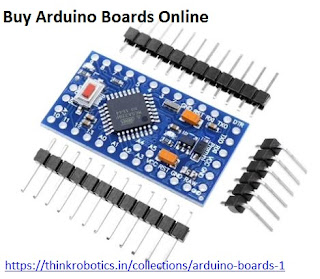When combined together in a symmetric manner, multiple LEDs can be used to display messages or patterns which look very aesthetic. Commonly, LEDs are arranged in the pattern of a square matrix, as it is easy to program and convenient to use. This tutorial utilizes an 8x8 matrix to display scrolling text.
Components required for this project:
1- Arduino
Any Arduino would do for this project.
2- 8x8 LED matix MAX7219 module
This LED matrix is driven by the MAX7219 IC. If not for this matrix, we would have to “scan” through each row at a very fast rate, to give the illusion of the text scrolling on the matrix. This project requires 16 digital/analog pins along with additional circuitry (transistors) which is very inconvenient. Another problem which would encounter sans the MAX7219 is that 64 LEDs would draw a huge amount of current, and this would also lead to LEDs glowing with uneven brightness, which does not look good at all. Henceforth, the MAX7219 not only saves us pins (it utilizes only 3 digital pins + one VCC pin + one GND pin = 5 pins in total) but also distributes current equally.
3- Bread Board (Optional)
Schematic, wiring, and pin table:
Components required for this project:
1- Arduino
Any Arduino would do for this project.
2- 8x8 LED matix MAX7219 module
This LED matrix is driven by the MAX7219 IC. If not for this matrix, we would have to “scan” through each row at a very fast rate, to give the illusion of the text scrolling on the matrix. This project requires 16 digital/analog pins along with additional circuitry (transistors) which is very inconvenient. Another problem which would encounter sans the MAX7219 is that 64 LEDs would draw a huge amount of current, and this would also lead to LEDs glowing with uneven brightness, which does not look good at all. Henceforth, the MAX7219 not only saves us pins (it utilizes only 3 digital pins + one VCC pin + one GND pin = 5 pins in total) but also distributes current equally.
3- Bread Board (Optional)
Schematic, wiring, and pin table:
Before uploading the code, make sure you install the MaxMatrix library for Arduino.
Once you’ve installed the library, change the text that you want to scroll over the display and upload the code. The text should then scroll over the screen.
Also, these matrices can be daisy chained. Change the number of displays in use to add more displays.For more information visit our website :thinkrobotics

















